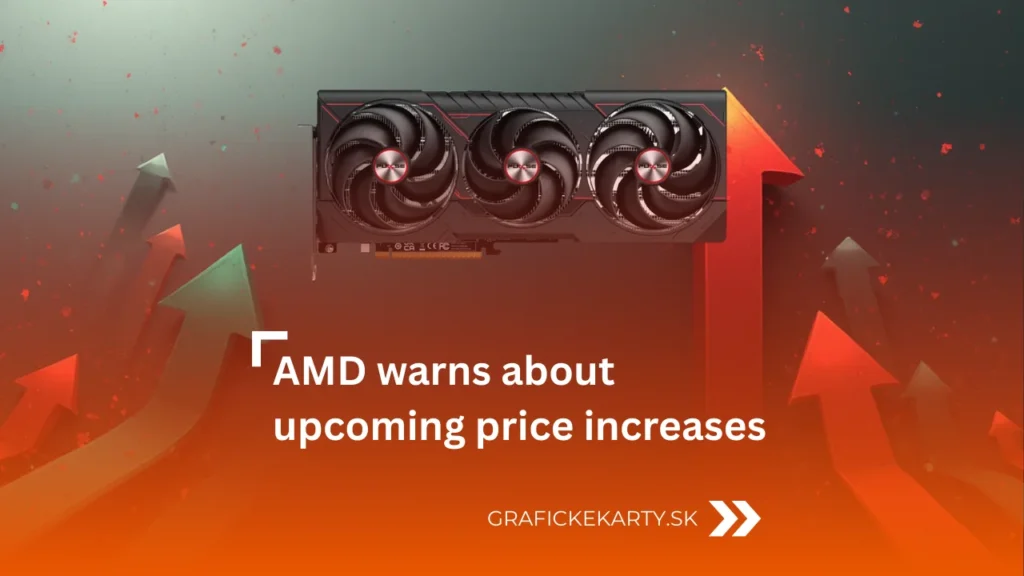The graphics card market is facing another unpleasant change. AMD has reportedly warned manufacturers and distributors about upcoming graphics card price hikes, saying it plans to make its GPUs more expensive in the coming months.. A price increase of about ten percent is expected, which may affect both the current Radeon RX 7000 series and the upcoming Radeon RX 9000 models.
The signal comes at a time when the market is recovering from Black Friday and customers are still taking advantage of the fading promotions. This time, however, it’s not a short-term blip. The price rise is related to rising production costs, which have hit the graphics memory segment in particular. The AI sector has dramatically increased the demand for DRAM and GDDR6, which is creating pressure in the market that is being passed directly through to consumer dedicated graphics card prices.
Why is AMD preparing graphics card price hikes and what is behind the price increase?
According to the report, AMD’s partners have received notice that manufacturing and component costs have risen dramatically of late. The memory market plays the biggest role in this. Demand for DRAM and GDDR6 has increased as data centers and AI infrastructure buy virtually all available supply. This onslaught is making gaming graphics cards less of a priority for manufacturers and increasingly expensive to produce.
Meanwhile, AMD-chip graphics card manufacturers don’t have much room for optimization. If they buy more expensive memory, the price of the final product goes up as the Radeon RX 9000 generation doesn’t want to risk lower margins on their new flagship series. That’s why graphics card price hikes will affect the whole chain — first partners, then distribution, and finally customers. Some regions may feel the price increase even more strongly.
Graphics card price hikes are also likely to increase in the US. Distributors are sensitive to the changes and component prices are determined globally. US is one of the markets where such changes are transmitted quickly, so if AMD proceeds to adjust prices at the beginning of the year, we will see the impact without a long wait. In practice, the mid-range Radeon RX 7700 XT or RX 7800 XT may cost tens of euros extra, while the high-end may become even more expensive – especially for models with large VRAM, which suffer the most from the price of memory.
The impact of AI and pressure on production capacity
We see the impact of the AI market on hardware prices mainly in server GPUs, but it is now starting to be felt on the consumer side as well. Large companies are buying huge volumes of memory, severely limiting supply for others. Whereas once gaming GPUs competed only with each other, today they are competing for the same components with data centers, supercomputers, and AI clusters.
Manufacturers like Samsung and SK Hynix are ramping up production, but not fast enough to meet demand. That’s why making graphics card price hikes are almost inevitable for AMD. And it’s not likely to be a single manufacturer problem. TweakTown points out that although the current reports are mainly about AMD, the pressure on the memory market is also affecting NVIDIA. If production costs for GDDR6 and GDDR7 continue to rise, it’s only a matter of time before the competition adjusts prices as well.
Thus, customers may face a gradual increase in price. First the models with large VRAM, then the mid-range and finally the budget segment. We expect the most significant changes during the first quarter of 2026, when the new component price lists will take full effect.
Conclusion
If anyone is planning to upgrade or putting together a new build, the next few weeks may be the last chance to buy at current prices. They are currently stable, but change can come quickly – especially when distributors start responding to new information from AMD. Graphics card price hikes may not happen all at once. First the high-end may jump, then the mid-range, and finally the cheaper models. For cards with increased memory consumption, the price increase may even go above the announced ten percent.
So the situation is clear: AMD is preparing a move that may kick off a broader trend across the entire market. Rising memory prices, pressure from the AI sector and limited production capacity are creating a combination that is pushing GPUs upwards. Those who want a graphics card at today’s prices shouldn’t hesitate too much.
Check out the best AMD Radeon graphics cards before GPU prices start to rise.

